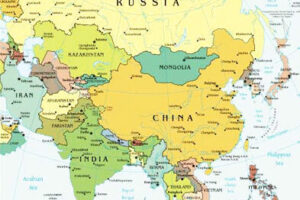JRL NEWSWATCH: “Kennan Cable No. 33: A Russian Pivot to Asia? Russian Trade with Asia from 2006 to 2016 [Excerpt]” – Kennan Institute/Michael Corbin

(Kennan Institute – wilsoncenter.org/program/kennan-institute – Michael Corbin – May 18, 2018)
Michael Corbin has nearly twenty years of experience in the international financial services and trade arena, the majority with the U.S. Department of Commerce’s Office of Finance and Insurance Industries.
On August 22, 2012, the Russian Federation officially joined the World Trade Organization (WTO) after almost 18 years of negotiations. A mere month later Russian leadership was declaring that trade with the Asia-Pacific countries would surpass trade with Europe by 2017 or 2022.[1] Russian First Deputy Prime Minister Igor Shuvalov said, at the opening of the Asia-Pacific Economic Cooperation (APEC) CEO Summit in September 2012, that “we would like to make this direction strong enough in the coming five to ten years to expand trade with this region even more than with Europe.” [2]
Given Russia’s high level of trade turnover with Europe over the last 25 years, this proclamation was not given much serious consideration. Rather, it was met by high levels of skepticism, particularly in the West. Russian economic overtures to the East were viewed as propaganda or geopolitical rhetoric. For example, The Economist claimed in a November 2016 article discussing Russia’s proclamations of an economic turn to the East that Russia “Stoit zadom k Azii-it stands with its back to Asia.”[3]
Despite attempts at greater engagement with Asia, which have been accompanied by the rhetoric of improved trade relations, has there truly been an increase of trade between Russia and Asia? The answer is that not only is Russia in the midst of a decade’s long redirection in trade flows and economic relations with Asian countries, but that in many ways Asian countries are actively seeking improved economic ties with Russia in the form of trade and greater investment. Moreover, the current movement eastward is part of a decade and a half long turn that precedes the economic crisis, Russia’s entry into the WTO, and geopolitical tensions with the West. …Not a Full Pivot, But Greater Balance
For Russia and Asia to become strong commercial partners will take a long time. Russia has failed to direct its internal economic development eastward, and it barely penetrates the Asian market for goods other than commodities and arms. Even though trade has increased at an impressive level between the regions from 2006 to 2016, Russia still lacks the necessary infrastructure for transport and production in the Far East.[12] Indeed, a lack of infrastructure is a the problem that could hinder continued trade with Asia as a whole. The fact that less than 10 percent of Russia’s population resides in the eastern half of the country imposes significant human capital limitations on its ability to trade with Asia, unless trade is somehow managed via Moscow.
China will continue to be the true driver of Russia’s trade with Asia, as Chinese exports are increasingly relevant substitutes for EU exports, although Chinese quality still ranks lower than that of the EU. However, stagnant Russian wages find Chinese imports more affordable overall.
Although First Deputy Prime Minister Shuvalov’s prediction remains unrealized, Russian trade is moving in an eastward direction and Russia could quite possibly see trade with Asia on par with the EU by 2022. If so, Russia will have made impressive steps towards balancing trade relations between East and West and undergone a clear change in trade flows in under 20 years. Most importantly, the change in direction cannot be viewed solely as a knee-jerk reaction to Russia’s geopolitical tensions with the West during the last five years. Rather, it is the fruition of a policy effort to improve relationships in order to significantly increase trade with Asia over the last decade and a half.
